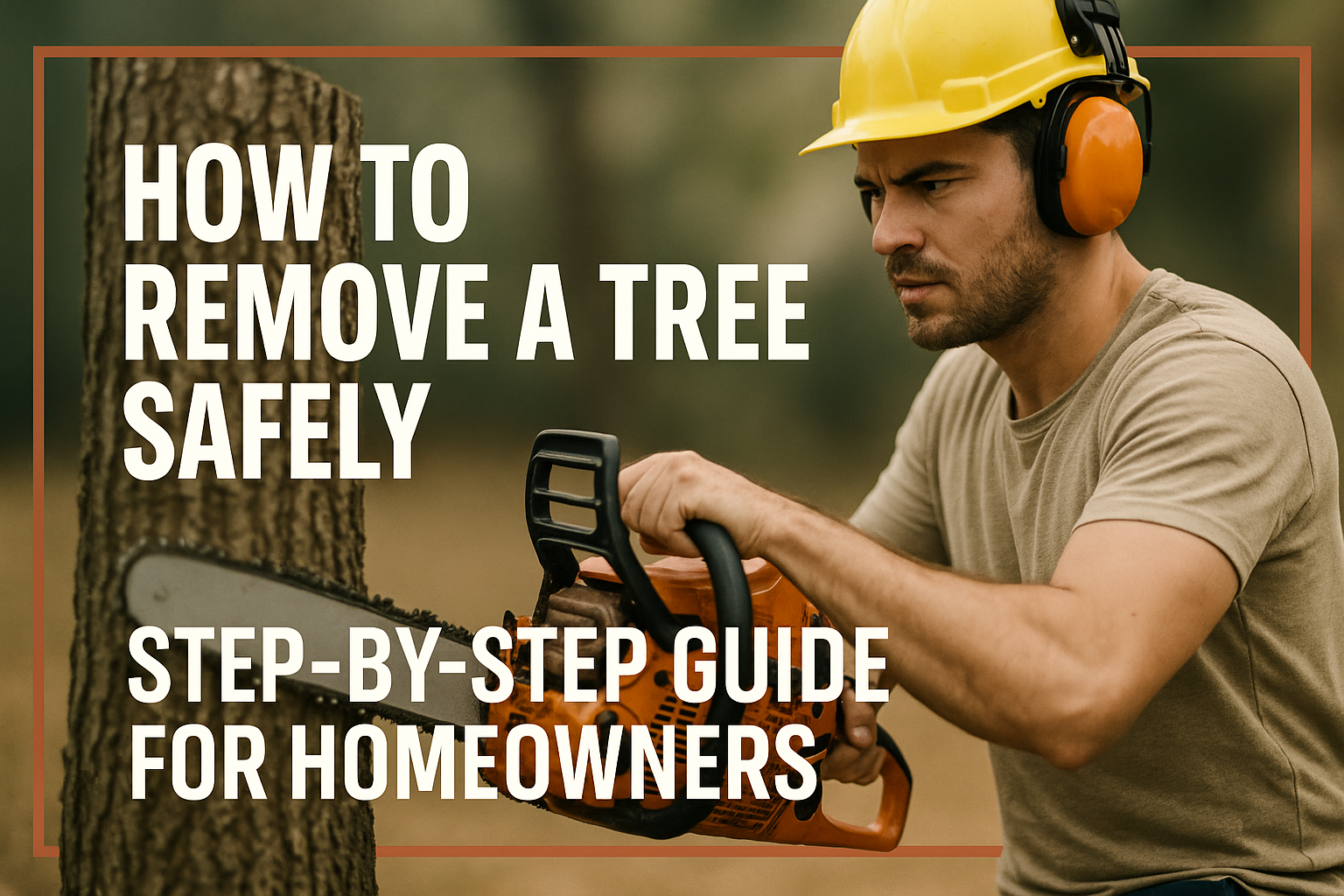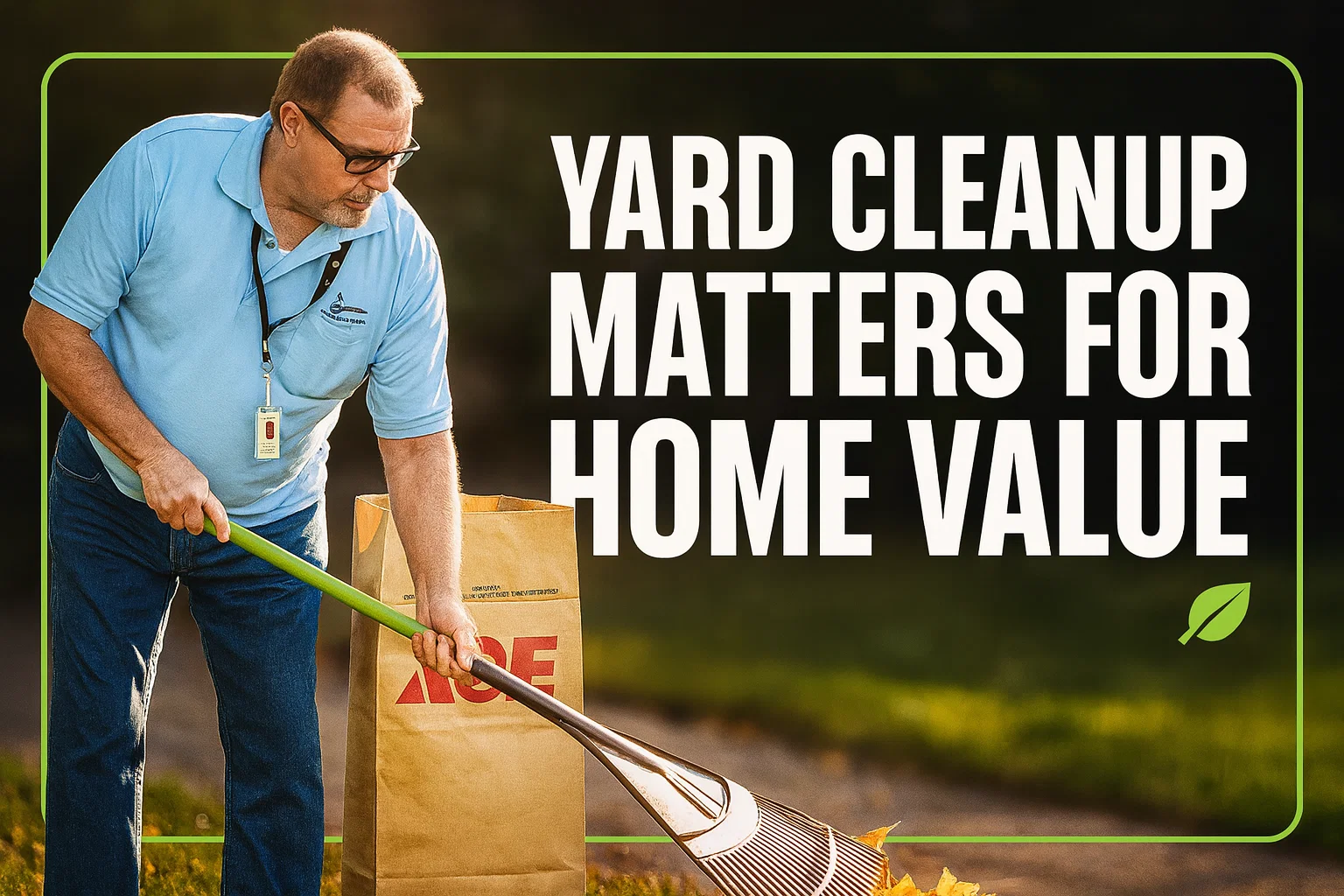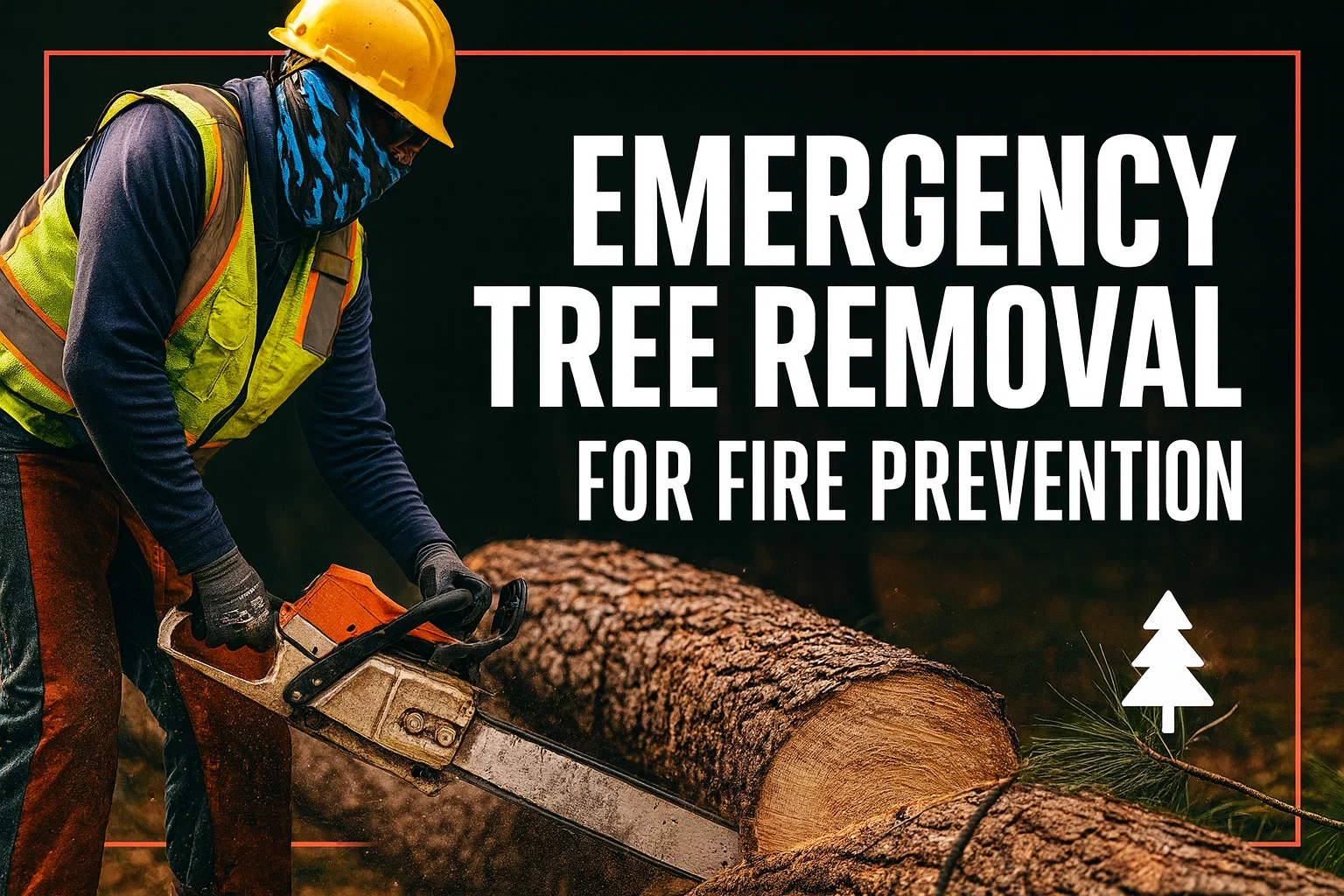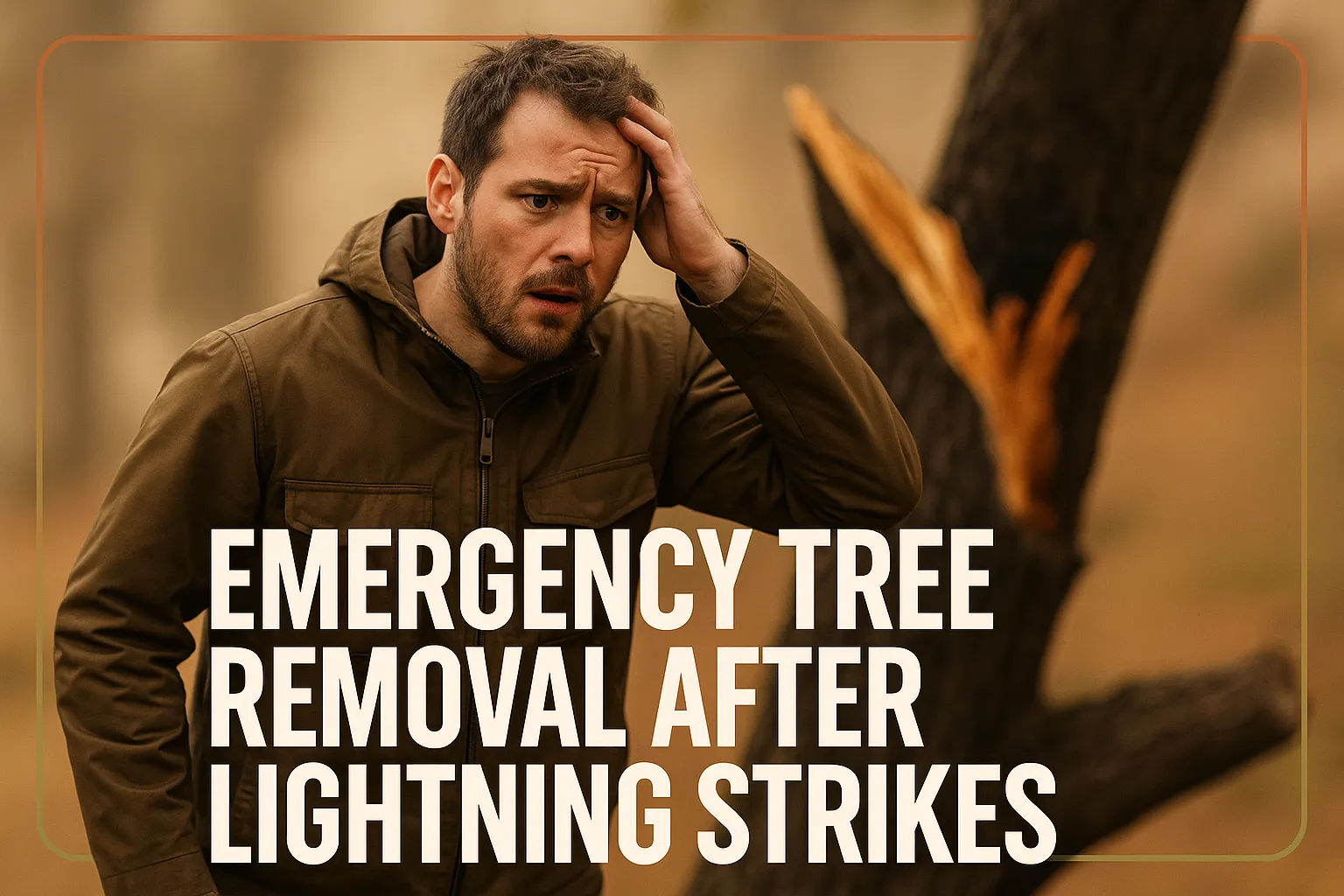Removing a tree is a powerful task that can transform your yard, however, not something that you should handle with less respect. In case that tree is obstructing your view, its roots are endangering your home & foundation or it is damaged beyond repair, a knowledge of how to get rid of a tree safely will help you avoid costly accidents and injuries. This manual from picking the right tools to scheduling the perfect fall will give you the power to be in charge and at the same time keep your dear ones and property safe. Do not be restrained by hesitation or fright; find out the wise, secure steps that make getting rid of the tree doable and without any stress. Are you willing to confront that tree? We are going to see the safest, most convenient way of doing it, step by step.
Why You Might Need to Remove a Tree
Common Reasons for Removing a Tree
If the trees are lifeless, on their way to death, or have some kind of illness, then they might require removal. Other frequently mentioned causes for removals are roots that endanger the foundations, underground pipes, or sidewalks and trees that cut off the sun or your view. The presence of safety risks, such as breakable branches or a tree that is leaning in a dangerous way can also be considered as a reason for getting rid of it.
When Tree Removal Becomes Necessary for Safety
In case trees are dead, dying, or infected, they might be removed. Besides, roots that damage foundations, underground pipes, or sidewalks, and trees that intercept sunlight or block the view are some of the impelling reasons for removal. Additionally, the presence of unstable branches or a tree that is leaning in a dangerous way can also be a safety risk and removal is the only solution.
Legal or Environmental Considerations Before Tree Removal
Definitely, one of the first things to do prior to tree removal by a homeowner is to obtain information about permits and regulations locally. Being informed about this is crucial, especially when considering protected species or restrictions set in residential areas. Pay attention to the effects on nature and, therefore, a good idea would be to look for ways like reusing the wood or giving it a proper disposal in order to avoid or lessen the impact on the environment.
Planning Before You Remove a Tree
Assessing the Size and Condition of the Tree
First of all, visually inspect the tree whether it has rotted parts, cracks, or is infested with pests, as this may not only affect its stability but also how you should behave around it. Take the height and the trunk of the tree with a tape measure before you cut it off to get a rough notion of the work and time required. Depending on the size and the condition of the tree, decide if the task can be done with a manual tool or if you need to hire a professional for safety reasons.
Do you need a Permit to remove a Tree?
Before cutting the tree, check if it’s required to get a permit by checking with the municipal office or through online portals. Usually, permission is needed for big trees, those that are in protected areas, or the ones that are a certain species regulated by the local authorities. Getting the correct permit will keep you away from the law trouble and will let you conform to the environmental regulations.
Safety Equipment and Tools You’ll Need
It is very important to ensure the safety of the person who is gonna remove the tree at any cost. The least that should be worn are safety gloves, safety glasses, a safety helmet and strong boots, these are all for the protection of the person. The correct tools generally consist of a chainsaw or a hand saw, a rope, wedges and a ladder. In addition, always have a first aid kit and a phone close to you so that, if an accident happens, you can react immediately. Properly planning the work and arranging the right equipment will make the job of removing the tree more convenient and safe.
How to Remove a Tree Step-by-Step
How to Uproot a Tree by Hand
The first step is to dig around the tree that you want to remove so that you can see its roots. Get your axe or saw and sever the roots that you have exposed, making sure that you do it carefully. Afterwards, attach a rope to the tree and using a lever, start moving the tree from side to side until it is loose enough to be pulled out entirely. The technique you are using is suitable for trees that are small and have roots that you can handle.
Cutting Down the Tree Safely
In order to have full control over the tree falling, you have to pick a nice day without wind. Get the tree ready for the direction in which it is going to fall and make sure that there is nobody and nothing around. On the side where the tree will fall make the notch cut and the cut must be approximately one-third of the trunk. The back cut should be done slowly from the opposite side and the wedges should be used to help guide and control the fall.
How to Remove Tree Stumps and Roots
One of the ways to take out the stumps is to employ a stump grinder, which essentially chews the stump that is underground level and makes it into small wood chips. In the case that grinding is not possible, you can use manual digging and root cutting with an axe or saw. There is also a method by which you put chemicals on the stump to help it rot faster. Be very careful if you have to remove big roots, so as not to harm the nearby structures or plants.
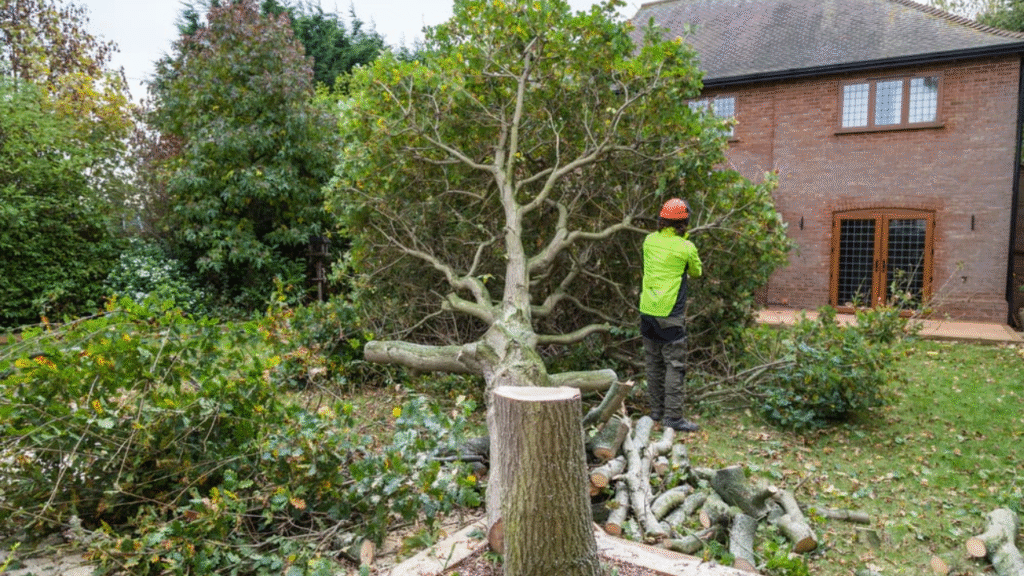
Removing Trees from Your Garden
Garden-Friendly Techniques for Tree Removal
If you are taking trees out of your garden, please use manual tools instead of strong machines in order to keep the fragile garden’s natural integrity intact. The use of hand instruments lessens the hardening of the soil and also the rejuvenation of the plants that grow around. To protect the soil and the plants that are growing close together, put mulch or some other protective covers on the parts that are left open during the removal.
How to Avoid Damaging Nearby Plants or Soil
Before you start digging into the roots of plants that are growing near your garden, make sure you work slowly and take time to examine the root zones. On the other hand, if you must use heavy equipment, try to make the ground hard and dry so as not to compact the soil which is very dangerous to plant roots and the whole process of respiration in the soil.
Tips for Restoring the Garden After Removing a Tree
Keep on watering and fertilizing the area that has been restored to stimulate regrowth and to make the garden return fast to its normal state after the tree removal. Make sure to use nutritious soil to fill in any holes or depressions after the tree has been taken out so as to provide a good environment for the next planting. Plant ground cover, it will not only protect the soil from eroding but also keep the soil healthy.
DIY vs. Hiring a Tree Removal Service
Cutting down a tree on your own is, in most cases, not dangerous when the tree is small, that is, usually less than 30 feet, and is something anyone can get to without difficulty. Also, make sure that you have the right tools, to be specific, a chainsaw or a handsaw and that you know how to use them safely. Above all, make sure that there are no power lines, buildings, or any other kind of structures in the area where the tree is going to fall, thereby making it a safe job for a skilled DIYer.
Benefits of Hiring Professionals for Tree Removal
When the removal of a big or dangerous tree is in question, professional tree removal services have the knowledge to handle the situation in a safe manner. Besides, they are fully equipped with modern safety devices and have the necessary insurance coverage for your safety and theirs. Additionally, hiring professionals is a great way to ensure that the work area will be cleaned up efficiently and that the waste from the tree will be disposed of properly, thus, saving you time and reducing risk.
What to Do After Removing a Tree
Disposing of Tree Debris Responsibly
Once the tree is out of the way, getting rid of the leftover parts in a responsible manner is what counts. Simply by chopping up your larger logs, you not only make them easier to handle, but you also can produce very nice firewood or mulch for your garden. Numerous municipalities have arranged a program for the disposal of green waste, in which the tree debris can be picked up and recycled at the convenience of the residents, thus less waste is sent to the landfill. The reason for this is that burning waste is prohibited in most places because of the negative impact on the air quality and local regulations.
How to Fill and Level the Area
After the departure of a tree and its stump, the hole should be filled with soil that is fresh and rich. The soil is to be packed but lightly so that it does not settle later, however, you should not over-pack it as this may cause damage to the plants that you will plant afterwards. Moreover, you can grade the soil in order to have water running off and prevent the accumulation of water or erosion.
Replanting or Repurposing the Space
Turn the cleared area into a new one by planting a tree or a selection of garden plants to bring back the charm and harmony. In addition, convert the place into lawn space, a patio, or any other landscaping feature that matches your requirements and style. Restoration done right is a way of caring for and beautifying your outdoor space after a tree has been taken out.
Conclusion
Eliminating a tree from your premises without causing harm is a procedure that demands you to think it through, have the necessary implements and a good knowledge of the method. It is okay to cut down a minor tree by yourself, but for large or dangerous ones, you’d better hire professionals and still, safety should still be a priority. Alexa Tree Service LLC is the place where you will find the expertise and care you need when you want to get rid of trees.
Our staff, from the time of the evaluation, removal, and debris clearing to the restoration of your yard, is at your service with professionalism and respect for your property. If you are uncertain, then professionals are the right people to give you peace of mind, and they will be safe and reliable in handling your tree removal needs.
FAQ’s
A method of telling that a tree should be removed is determining whether it is a dead or a diseased tree. Besides, trees that are severely tilted or have roots that are damaged and may be causing the area to become unstable should be removed to be safe.
In a majority of cases, local governments demand permits, notably when it comes to big or protected trees. It is better to be safe than sorry, thus, confirm it with your municipal office.
Primarily, safety equipment should consist of protective gloves and goggles, a safety helmet, durable boots, and the correct tools like a chainsaw, rope, and a wedge.
Chop wood for firewood or mulch, use local green waste disposal services, or repurpose the wood responsibly.

